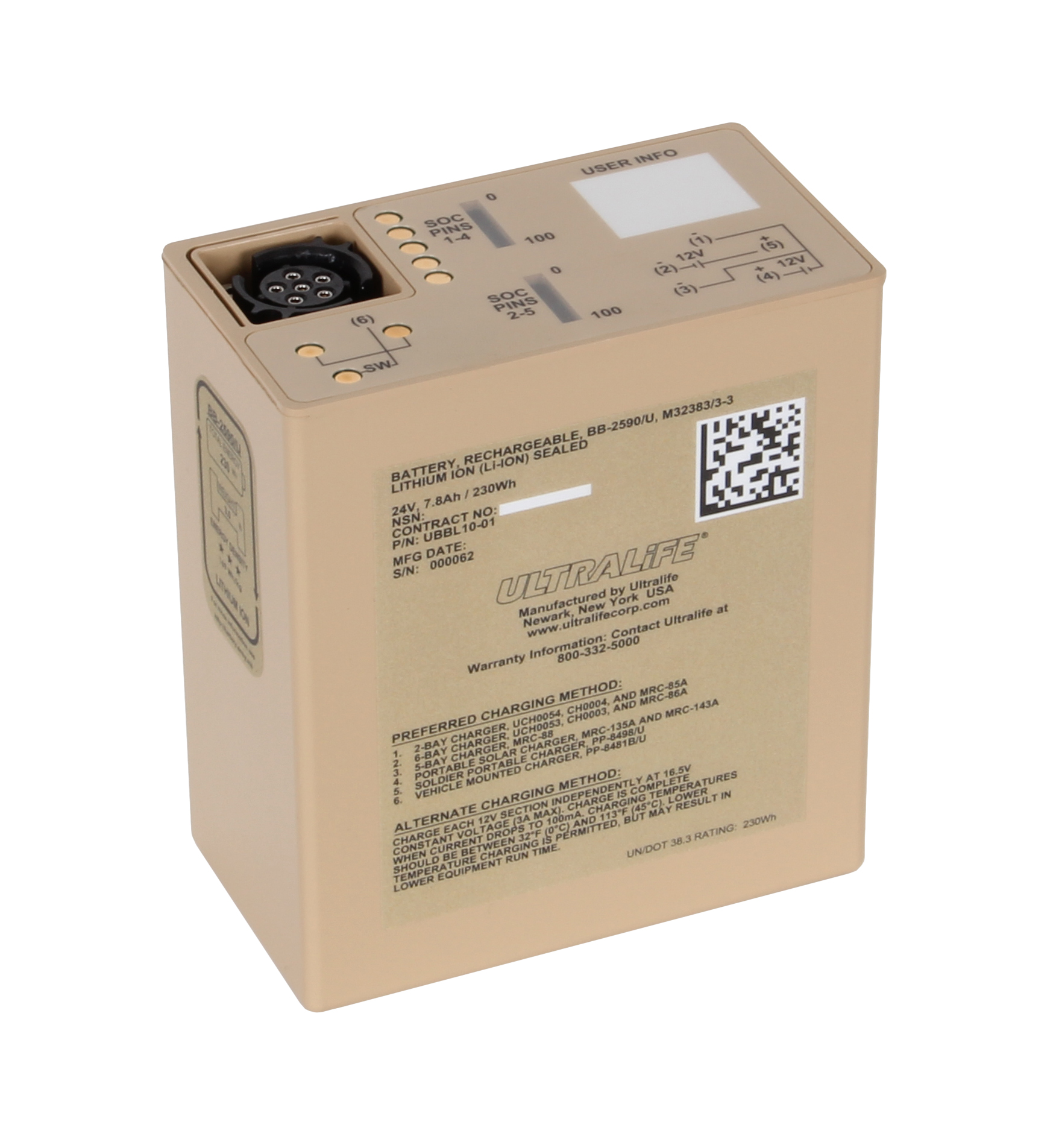June 19, 2018 | Product Brief | Employing batteries and battery chargers that can meet the high stress demands of combat remains an increasingly cumbersome struggle for the military. To overcome these issues, military battery manufacturer Ultralife has further developed its family of XX90 batteries, which have capability of powering over 100 different applications including radios, robots, and sensors. Ultralife has developed a diverse portfolio of batteries to meet the needs of today’s modern military equipment. The XX90 range includes the UBI-2590 rechargeable batteries like the UBBL10-01 and UBBL02-01, as well as the UB0023, UB0031, and UB0032 non-rechargeable batteries, chargers, adapters, and universal cables.
 Ultralife’s non-rechargeable range offers at least 50 percent more capacity than the lithium sulfur dioxide batteries that are still widely used by the military today. While a BB-5590 lithium sulfur dioxide battery operates at 15Ah, Ultralife’s UB0023 offers users 22Ah, while the UB0032 has 32Ah capacity making it suitable to power radio communications devices and missile targeting systems.
Ultralife’s non-rechargeable range offers at least 50 percent more capacity than the lithium sulfur dioxide batteries that are still widely used by the military today. While a BB-5590 lithium sulfur dioxide battery operates at 15Ah, Ultralife’s UB0023 offers users 22Ah, while the UB0032 has 32Ah capacity making it suitable to power radio communications devices and missile targeting systems.
Batteries are the primary means of powering applications in the military. From military radios to bomb disposal robots and drones, defense operations require these critical components to be fully charged and ready to use. Failure to have reliable and functioning equipment can not only jeopardize the success of an operation, but also increase the risk to a soldier’s safety.
The need for durable and easy-to-use batteries in the field continues to increase as more defense operation equipment become increasingly reliant on technology. Ultralife’s portfolio was originally designed to power military communication gear but has since evolved into other sectors like medical, energy and industrial.
The popularity among non-military customers using products from the XX90 range has led Ultralife to release commercially labelled versions of the UBI-2590 batteries. With the additional –CB suffix, the batteries can be exported internationally and meet the regulatory compliance for importation in the North American, European, and Asian markets.







